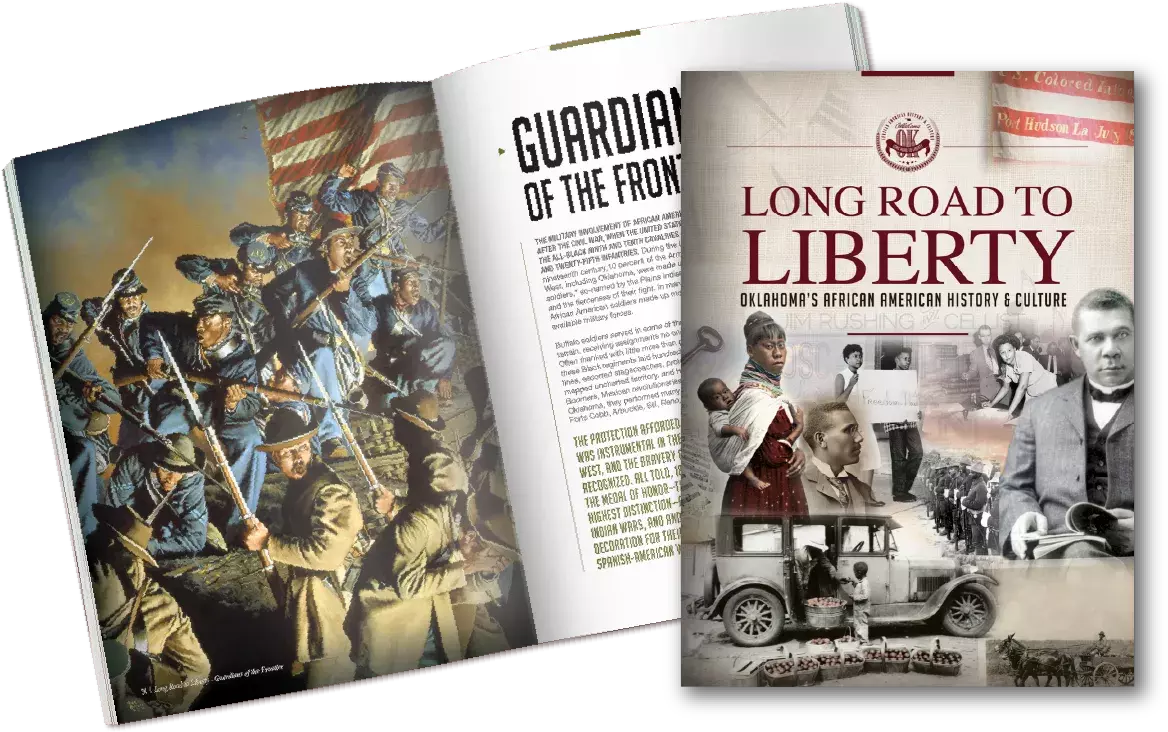Celebrate Oklahoma’s African American history by exploring the individuals, landmarks, historic towns, restaurants and more that impacted the state’s African American legacy and cultural heritage.
Spotlight
Jimmy RushingFamous Big Band Jazz & Blues Singer
Jimmy Rushing
Henry Ossian FlipperFirst African American Graduate from West Point
Henry Ossian Flipper
Chaplain Allen AllensworthOne of Two Black Commissioned Officers to Serve in Indian Territory
Chaplain Allen Allensworth
Buffalo SoldiersFirst African American Peacetime Army Regiment
Buffalo Soldiers
Bill PickettFirst African American Cowboy Movie Star & Originator of the "Bulldog" Style of Steer Wrestling
Bill Pickett
Ada Lois Sipuel FisherAfrican American Education Pioneer
Ada Lois Sipuel Fisher
Ralph Waldo EllisonFirst African American to Win the National Book Award
Ralph Waldo Ellison
Charlie ChristianKnown as One of the "Founding Fathers of Bebop"
Charlie Christian
Green I. CurrinFirst African American to Serve in the Oklahoma Territorial Legislature
Green I. Currin
Edward P. McCabeCity of Langston Founder
Edward P. McCabe
George W. McLaurinPioneer for Civil Rights & African American Education
George W. McLaurin









